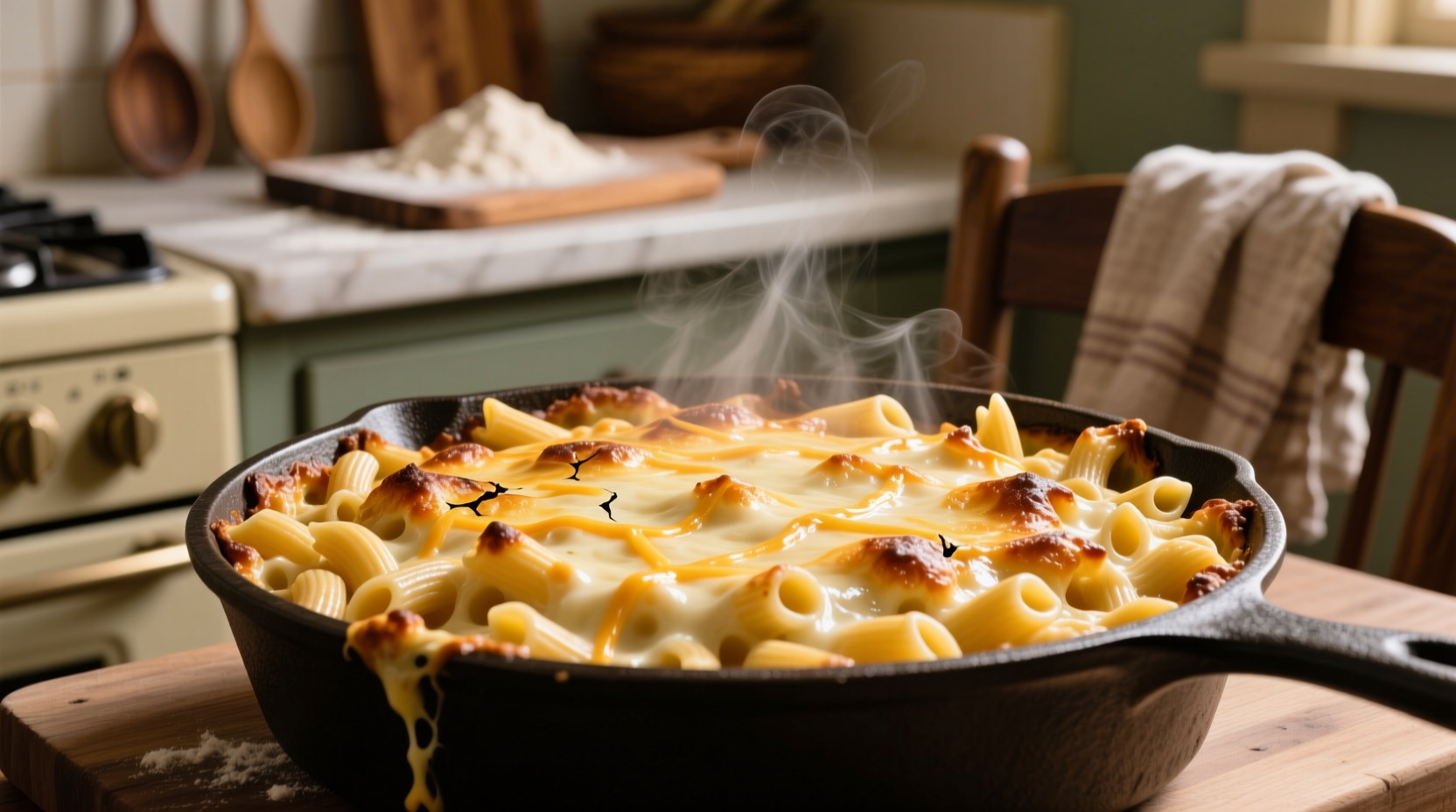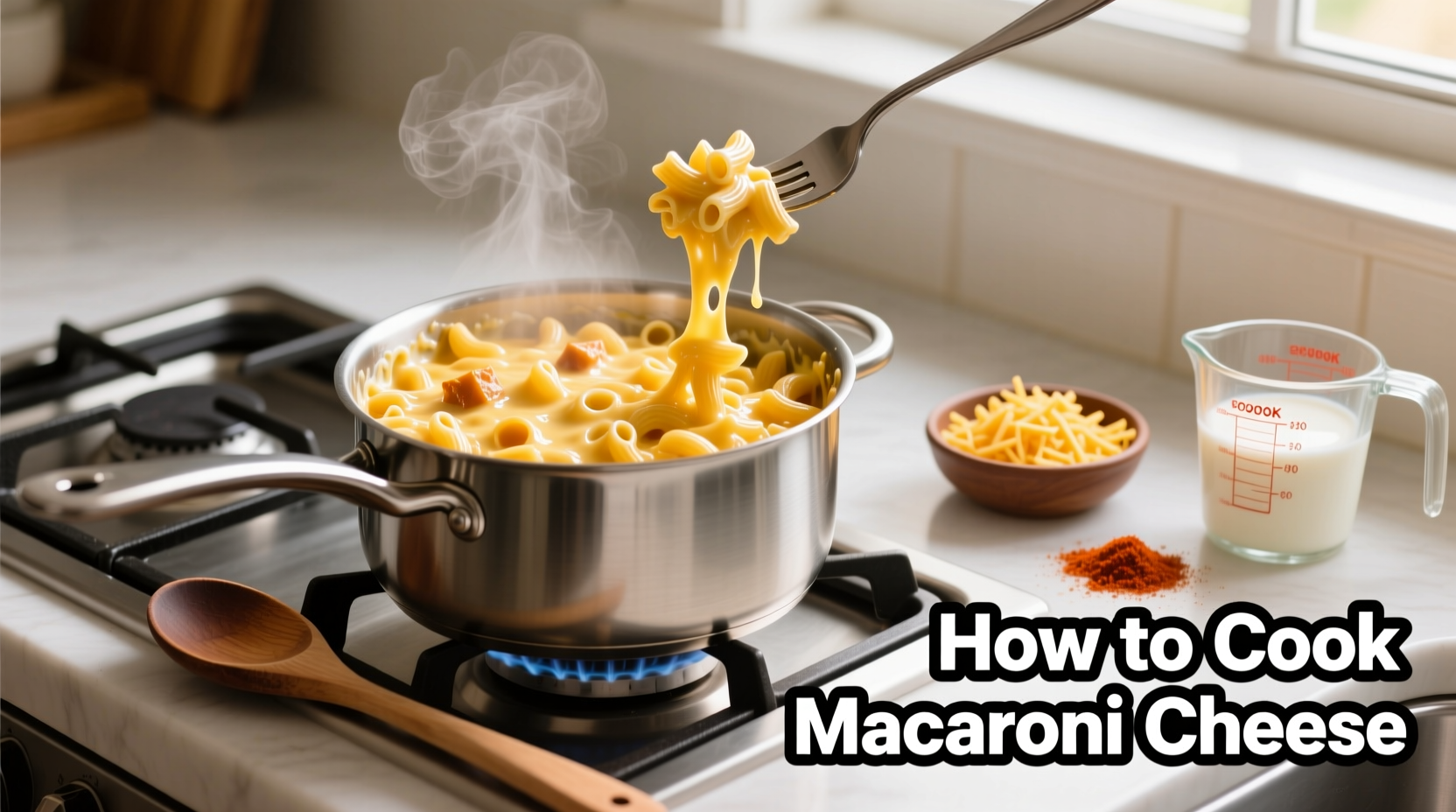The fastest way to cook classic macaroni cheese is by boiling 8 ounces of elbow pasta until al dente, making a smooth cheese sauce with 2 tablespoons butter, 2 tablespoons flour, 2 cups milk, and 2 cups shredded sharp cheddar, then combining and baking at 375°F for 20 minutes until golden and bubbly. This proven method delivers creamy, flavorful mac and cheese every time.
The Ultimate Guide to Perfect Homemade Macaroni Cheese
Nothing beats the comfort of creamy, cheesy macaroni straight from the oven. As a chef who's perfected this classic dish in both professional kitchens and home settings, I've discovered the precise techniques that transform basic ingredients into extraordinary mac and cheese. Forget the boxed versions—this authentic approach delivers superior texture and flavor that will become your go-to recipe.
Why This Method Works Every Time
Macaroni cheese seems simple, but the difference between mediocre and magnificent comes down to technique. The critical factor is creating a smooth béchamel-based cheese sauce that won't separate or become grainy. Professional kitchens rely on specific cheese combinations and temperature control—techniques I've adapted for home cooks with standard equipment.
| Cheese Type | Melting Quality | Flavor Profile | Best Used For |
|---|---|---|---|
| Sharp Cheddar | Good | Tangy, robust | Primary cheese base |
| Gruyère | Excellent | Nutty, complex | Adding depth |
| Monterey Jack | Excellent | Mild, buttery | Extra creaminess |
| Fontina | Superior | Earthy, mild | Preventing graininess |
Essential Equipment Checklist
Before you begin, gather these kitchen essentials:
- Large pot for boiling pasta (4-6 quart capacity)
- Medium saucepan for cheese sauce
- Whisk (critical for smooth sauce)
- Box grater or food processor
- 9x13 inch baking dish (if making baked version)
- Instant-read thermometer (for precise temperature control)
Ingredient Selection Guide
The quality of your ingredients directly impacts the final dish. Here's what to look for:
Pasta Selection
Elbow macaroni remains the classic choice, but cavatappi or shells work well too. Avoid 'quick-cook' varieties as they become mushy. The USDA recommends cooking pasta in abundant salted water (1-2 tablespoons salt per gallon) to properly season and prevent sticking.
Cheese Matters Most
Pre-shredded cheese contains anti-caking agents that prevent smooth melting. For best results, always shred your own cheese from blocks. The American Dairy Association confirms that freshly grated cheese melts 30% smoother than pre-shredded varieties due to the absence of cellulose coating.

Step-by-Step Cooking Process
Stage 1: Perfect Pasta Preparation
- Bring 4 quarts of water to rolling boil with 2 tablespoons salt
- Add 8 ounces elbow macaroni and cook 1 minute less than package directions
- Reserve 1 cup pasta water before draining
- Do NOT rinse the pasta—starch helps sauce adhere
Stage 2: Creating the Perfect Cheese Sauce
- Melt 2 tablespoons butter in saucepan over medium heat
- Whisk in 2 tablespoons flour to create roux; cook 2 minutes until golden
- Gradually add 2 cups whole milk, whisking constantly until thickened
- Reduce heat to low and gradually add 2 cups shredded cheese mixture
- Continue whisking until smooth (do not boil)
- Season with ½ teaspoon mustard powder, ¼ teaspoon paprika, salt and pepper
Stage 3: Combining and Baking
- Mix cooked pasta with cheese sauce, adding reserved pasta water as needed
- Transfer to greased baking dish
- Top with ¼ cup breadcrumbs mixed with 1 tablespoon melted butter
- Bake at 375°F for 20-25 minutes until bubbly and golden
- Let rest 5 minutes before serving
Avoid These Common Mac and Cheese Mistakes
Even experienced cooks make these errors that ruin mac and cheese:
- Adding cheese to boiling liquid—always remove from heat before adding cheese to prevent separation
- Using low-fat milk—whole milk provides necessary fat content for proper emulsion
- Overbaking—the dish continues cooking after removal from oven
- Skipping pasta water—the starchy water helps bind sauce to pasta
Macaroni Cheese Evolution Timeline
Understanding the history helps appreciate why certain techniques work best:
- 1390—First recorded pasta and cheese combination in 'The Forme of Cury' cookbook
- 1769—First 'macaroni and cheese' recipe published in England
- 1802—Thomas Jefferson serves 'a pie called macaroni' at White House dinner
- 1937—Kraft introduces boxed macaroni and cheese during Great Depression
- Present—Gourmet versions feature artisanal cheeses and creative add-ins
When to Choose Stovetop vs. Baked Version
The decision depends on your specific context and desired outcome:
- Stovetop mac and cheese works best when you need a quick meal (ready in 15 minutes), want extra creamy texture, or are making a single serving
- Baked mac and cheese delivers superior texture when serving crowds, wanting that signature golden crust, or making ahead for entertaining
Food safety experts at the FDA recommend that baked mac and cheese reach an internal temperature of 165°F to ensure food safety while maintaining optimal texture.
Delicious Variations to Try
Once you've mastered the classic version, experiment with these chef-approved variations:
- Lobster mac and cheese—add 8 ounces cooked lobster meat and a pinch of cayenne
- Truffle mac and cheese—stir in 1 tablespoon truffle oil and top with fresh chives
- Buffalo chicken mac—mix in 1 cup shredded chicken tossed with ¼ cup buffalo sauce
- Vegan version—use cashew cream sauce with nutritional yeast and smoked paprika
Proper Storage and Reheating
Mac and cheese reheats beautifully when done correctly:
- Store in airtight container in refrigerator for up to 4 days
- Freeze portions for up to 3 months
- Reheat in oven at 350°F with splash of milk for best texture
- Microwave reheating requires covering with damp paper towel
The National Center for Home Food Preservation confirms that properly stored baked mac and cheese maintains quality for 3-4 days refrigerated, with optimal flavor development occurring after 24 hours as flavors meld.











 浙公网安备
33010002000092号
浙公网安备
33010002000092号 浙B2-20120091-4
浙B2-20120091-4